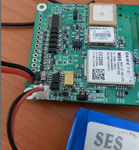BabaYaga
Advanced Member level 4
Hi Guys,
When i studied academically about the voltage regulators, they were devices used to reduce ripple in the output DC voltage with Zener diode forming the reference and operating in reverse bias.i don't know what are the disadvantages of such a regulator but i do know that Band gap is used as voltage reference now-a-days, so here are some queries to address:
1 - How does a Band Gap function as a Voltage Reference
2 - There are several kinds of PMICs like Buck, Boost, Buck-Boost
a - what are they in terms of functioning?
b - when to use them(applications or How to select appropriate one for a given application)?
3 - Linear Regulators vs Switching Regulators
you can take any device as an example like LT1086, PTN04050C etc.,
So, lets a have an interesting discussion and please kindly provide any references to your suggestions or replies since it really helps in the precise understanding of the topic.
Thank You
When i studied academically about the voltage regulators, they were devices used to reduce ripple in the output DC voltage with Zener diode forming the reference and operating in reverse bias.i don't know what are the disadvantages of such a regulator but i do know that Band gap is used as voltage reference now-a-days, so here are some queries to address:
1 - How does a Band Gap function as a Voltage Reference
2 - There are several kinds of PMICs like Buck, Boost, Buck-Boost
a - what are they in terms of functioning?
b - when to use them(applications or How to select appropriate one for a given application)?
3 - Linear Regulators vs Switching Regulators
you can take any device as an example like LT1086, PTN04050C etc.,
So, lets a have an interesting discussion and please kindly provide any references to your suggestions or replies since it really helps in the precise understanding of the topic.
Thank You

